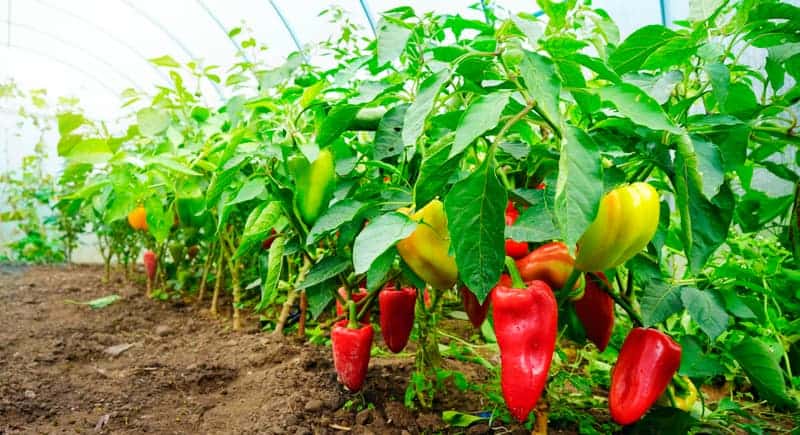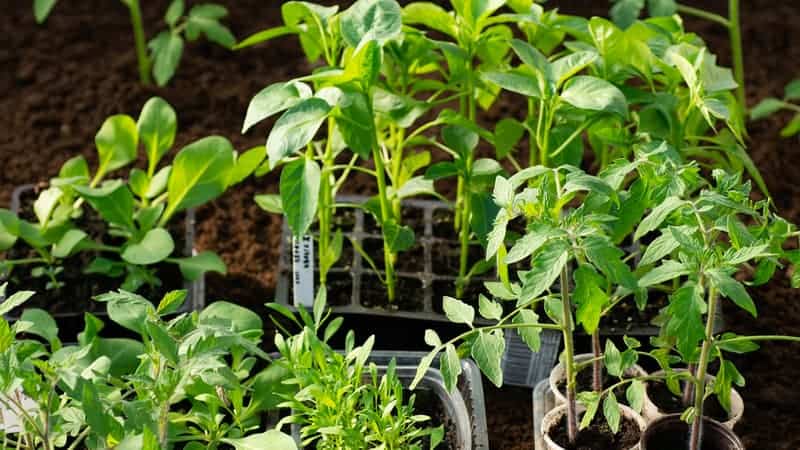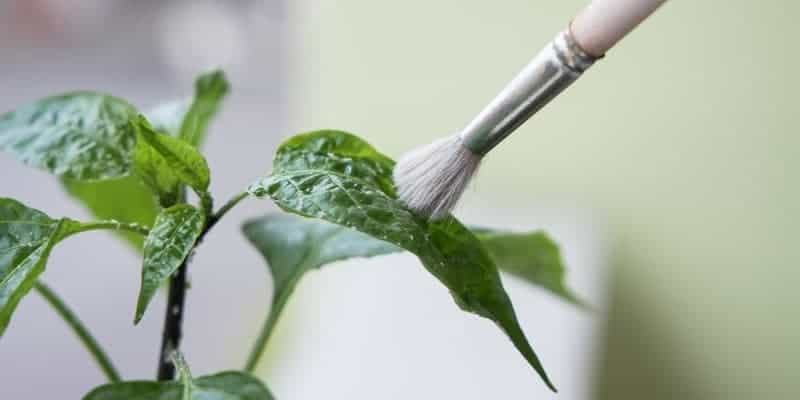Capsicum, also known as sweet pepper or bell pepper, is a member of the Solanaceae family. This annual plant is native to Central and South America, but is now grown in many parts of the world.
Capsicum plants come in a variety of shapes and sizes, and the fruits can range in colour from green to red, yellow, or purple.
These plants are cultivated throughout the year as vegetables, while their edible parts are categorically fruit. Capsicum belongs to the nightshade family with tomatoes, eggplants and potatoes.
Types of Capsicums in Australia
There are many types of capsicums grown in Australia. Most commercial varieties of capsicums are hybrids, and their primary mature colour is usually green.
Bell Pepper
The most common type of capsicum is the bell pepper or sweet pepper, which is typically green, red or yellow. These are “heatless” species, meaning they aren’t spicy.
The popular varieties of sweet pepper include: Pepperoncini, Romanian Sweet Pepper and Giant Bell.
Chilli Pepper

Spicy capsicum varieties are called chilli peppers or Capsicum annuum. They look like capsicums or bell peppers, but are fairly hot. Popular varieties of chilli pepper include: Habañero, Jalapeño and Padron.
Each type of capsicum has its own unique flavour, making it a versatile ingredient in lots of dishes. Whether you’re looking for a milder flavour or a spicy kick, there’s a capsicum variety that’s perfect for you.
When to Grow Capsicum in Australia
Capsicums are a tasty and versatile addition to any kitchen, and they can be grown throughout the year. The best months to plant capsicum in most parts of Australia are between October and February.
In cooler areas, it’s best to sow capsicum seeds indoors in late winter or early spring. Then transplant the seedlings into your garden when the weather warms up.
In warmer climates, capsicum plants can be direct-seeded into the garden in late spring or early summer.
Where to Grow Capsicum

Capsicum plants will be fine indoors or outside, but they need full sun and well-drained soil to thrive. They can be started from seed or transplanted from an existing plant.
Here’s how to grow them at home indoors or outside.
Preparing the Soil for Capsicum Plants
Growing capsicum is relatively easy. Here are a few things you can do to ensure a successful crop:
- First, choose a spot in your garden that gets full sun. Capsicum plants need at least six hours of sunlight per day to produce good yields.
- Next, loosen the soil with a spade or hoe to a depth of about 30 cm. You want the soil to be loose enough that roots can easily penetrate it.
- Once the soil is loose, apply some compost or manure and mix it in well. Then you’re ready to plant your capsicum seeds.
Ways to Grow Capsicum
How to Grow Capsicum from Seeds

Growing capsicum from seeds is a fun and rewarding experience. Not only will you get to enjoy the fruits of your labour, but you’ll also get to watch the capsicum plants grow and develop. Here are the steps you’ll need to take to grow capsicum from seeds:
- Choose a variety of capsicum that you’d like to grow. Many varieties are available, so take some time to research which would be best for your garden.
- Get some seeds from a reputable source. You can either purchase them online or collect them from ripe capsicum fruits.
- Fill a seed-starting tray with a quality potting mix and sow the seeds about 0.6 cm deep.
- Keep your seed trays indoors before transferring the plants outdoors or into pots.
- Water the soil gently and place the tray in a warm, sunny location.
- Keep the soil moist but not soggy, and soon you should see the seeds germinate and begin to grow.
- Once they’ve grown to be about 10 cm tall, they’re ready to be transplanted into your garden bed or pots.
How to Grow Capsicum in Pots

Growing capsicum in pots indoors is a great way to enjoy fresh peppers without taking up too much space. The best part is that you can control the soil quality and water levels, providing the perfect conditions for your plants. Here are a few tips to help you get started:
- Choose a pot that is at least 30 cm wide and 30 cm deep.
- Fill the pot with a high-quality potting mix and add slow-release fertiliser.
- Create a small mound in the centre of the pot and plant your capsicum seeds at least 1 cm deep.
- Water regularly, making sure that the soil never dries out. Also, provide additional water during hot, dry periods.
- In the first month of growth, capsicum plants should be fertilised weekly. When your capsicum plant is about 15 cm long, you can fertilise them every two weeks or so.
How to Grow Capsicum in Plots

Capsicum, also known as bell peppers, is a delicious and nutritious addition to any meal. And while they can be grown indoors, there’s nothing quite like the taste of pepper that’s been ripened by the sun. If you’re thinking of growing capsicum outdoors, here are a few tips to get you started.
- Choose a sunny spot in your garden. Capsicum plants need at least six hours of sunlight each day in order to produce peppers. If you live in an area with hot summers, provide some afternoon shade to prevent the plants from getting too much sun.
- Prepare the soil. Capsicum plants prefer well-drained soil that’s high in organic matter. You can add compost or manure to your existing soil to help improve its quality. Once the soil is ready, it’s time to plant your capsicum seeds or seedlings.
- Capsicum plants need regular watering, especially during the hot summer months. Be sure to keep an eye on the soil moisture levels and water as needed.
- You’ll know it’s time to harvest your peppers when they turn green, red, orange or yellow (it really depends on the variety) and are slightly soft to the touch.
How Long Does Capsicum Take to Grow?
Like all vegetables, capsicum has a growth cycle that starts with seed planting and germination and ends with harvesting the mature fruit.
However, unlike some other vegetables, they have a relatively long growing season.
Depending on the variety, capsicum can take anywhere from 60 to 90 days to produce mature fruit.
Of course, this means that gardeners in colder climates need to start their plants indoors and then transplant them outdoors once the weather warms up.
Capsicum Companion Plants

If you’re looking for the perfect partners for your capsicum plants, here are some options to consider.
Tomato
As a fellow nightshade family member, growing tomatoes can be great for your capsicums. Tomatoes can help to support the taller plants, and the two crops can benefit from each other’s nutrients.
Eggplant
Both eggplant and capsicum are members of the nightshade family, so they have many similarities. They share the same growing season and care, making them a great choice for companion plants.
Basil
Basil is not only a delicious herb to add to your dishes, but it’s also a great plant to support the growth of your capsicum plants. The aromatic basil will help to deter pests like thrips, flies and mosquitoes.
Nasturtium
Nasturtiums add a splash of colour to your garden and help protect capsicums from pests. These plants release a compound called isothiocyanate, which deters many common pests, such as aphids and whiteflies.
Marigold
Marigolds are well-known for their ability to deter pests, making them an ideal companion for capsicums (which can be susceptible to insect damage). They also add a cheerful yellow touch to your garden.
Common Capsicum Plant Diseases and Issues
Capsicum plants are relatively easy to care for, but they can be affected by a number of diseases.
They are also susceptible to insect infestations, so it’s always a good idea to grow companion plants to help deter pests.
Leaf Spot
Bacterial leaf spot is caused by a bacterium called Pseudomonas syringae. This bacterium invades the plant through wounds in the leaves and stem.
The affected leaves eventually fall off the plant, leading to reduced yield.
To prevent bacterial leaf spot, gardeners need to practice good hygiene when handling capsicum plants. Avoid wounding the leaves and disinfect any tools that come into contact with the plant.
Whiteflies

Capsicum plants are commonly affected by whiteflies, which are tiny insects that feed on plant sap. This feeding can cause stunted growth, yellowing of leaves, and decreased yields.
Whiteflies also produce honeydew, a sticky substance that can encourage the growth of sooty mould. In addition, whiteflies transmit plant diseases, which can further damage the plant.
While there are chemical pesticides that can control whiteflies, you can introduce beneficial insects like ladybugs, too.
But if you’re growing capsicum indoors, you can opt for an eco-friendly neem oil spray to deter pests.
Damping Off
Damping off is a common fungal disease that affects seedlings of many plant species, including capsicum.
The disease is caused by a variety of fungi, infecting seeds before they germinate or young seedlings as they grow.
Symptoms of damping off include wilting and discolouration of leaves, stem collapse and black or brown spots on the roots.
The disease can quickly kill young plants and is often fatal to entire seedlings. Once the fungi have taken hold, it is challenging to treat the plant. You’re better off starting again with a new one.
Thrips
Thrips are tiny, winged insects that are often found near flowers. These pests feed on the sap of plants, and they can cause plant leaves to curl and turn brown.
To prevent these pests from damaging your capsicums, it is important to inspect your plants regularly and remove any thrips that you find.
You can also spray neem oil or insecticides to rid your garden of this pest.
Powdery Mildew

Powdery mildew is a type of fungus that feeds off of plant leaves. While it’s not typically fatal to the plant, it can cause leaf damage and reduced fruit production.
Powdery mildew thrives in warm, humid conditions. The fungus will spread quickly if the leaves are wet or damp.
To prevent powdery mildew, water your capsicum plants early in the day so that the leaves have time to dry before nightfall.
You can also apply a fungicide to the leaves. If you already have powdery mildew, prune away any affected leaves and dispose of them carefully.
Destroy any infected plants to prevent the fungus from spreading.
Alternaria Blight
This disease is caused by the Alternaria alternata fungus. It infects the plant through wounds or areas of stressed tissue.
Symptoms of Alternaria blight include brown or black spots on the leaves, stems, and fruits of the plant.
The spots may be surrounded by a yellow halo, and they can vary in size from small dots to large blotches.
If you notice any of these symptoms on your capsicum plant, remove infected leaves and destroy them (do not compost). Then treat the plant with a fungicide or insecticide.
Add Some Spice in Your Life
While some gardeners shy away from capsicums, these peppers are the most popular to grow in gardens.
They come in a wide variety of shapes, sizes and colours, and can be used in countless recipes.
Plus, they’re really easy to grow, which makes them perfect for beginners and expert gardeners alike.

